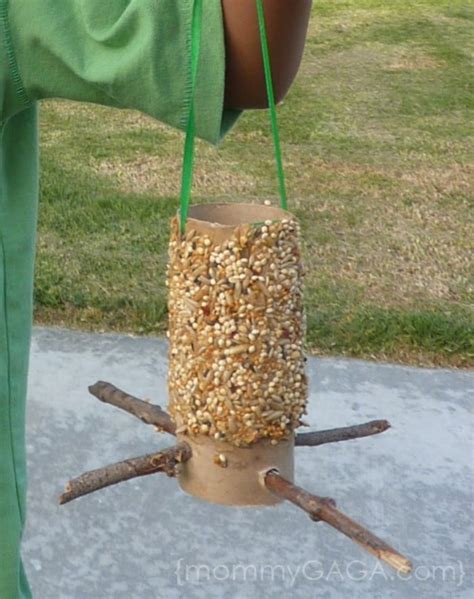
A Newfoundland puppy’s brief confinement in a makeshift “jail” for chewing on furniture has triggered a playful family dispute, resulting in the dog giving his mom the cold shoulder.
A Newfoundland puppy named Moose, known for his mischievous antics, found himself temporarily behind bars after his penchant for gnawing on the family’s furniture reached its peak. The incident, intended as a lighthearted lesson by Moose’s dad, sparked an amusing family feud, with Moose seemingly siding against his mom.
According to the original post by Moose’s owner and mom, Kristen Hewitt, the drama unfolded when her husband decided to construct a makeshift “jail” for Moose after the puppy’s chewing habits became unmanageable. Hewitt recounted on her social media account, “Moose has been in JAIL all day because he ate our couch. My husband built him a jail. I feel bad but also, he did eat our couch.” The image of Moose in his temporary enclosure quickly went viral, eliciting a range of reactions from amusement to sympathy.
However, the most unexpected outcome was Moose’s subsequent behavior. Hewitt shared that Moose has been pointedly ignoring her since the “jail” incident, while showing increased affection towards her husband, the “jailer.” She humorously noted, “He’s been giving me the cold shoulder ever since. He won’t even look at me. But he’s been cuddling with my husband, who is now his favorite person.” This has led to a comical divide within the family, as Hewitt jokingly laments the loss of her canine companion’s affection.
The situation underscores the unique bond between pets and their owners, and how even seemingly minor events can impact their relationships. While Moose’s “jail” stint was intended as a playful deterrent, it inadvertently created a temporary shift in his allegiances, highlighting the sensitive and emotional nature of animals. This domestic drama has resonated with pet owners worldwide, who recognize the quirky and often unpredictable behavior of their furry friends. The incident serves as a reminder of the joys and challenges of pet ownership, and the surprising ways animals can react to human actions.
The “Jail” Incident
The saga began when Moose, a typically exuberant Newfoundland puppy, began exhibiting an insatiable desire to chew on the family’s furniture. Newfoundlands, known for their large size and gentle disposition, are also notorious for their puppy chewing phase. In Moose’s case, his target of choice was the living room couch. Despite attempts to redirect his chewing behavior with appropriate toys, Moose continued to target the forbidden furniture.
Frustrated but seeking a humorous solution, Moose’s dad decided to construct a makeshift “jail” using household items. The enclosure was not intended as a punishment but rather as a temporary deterrent to discourage further chewing. Kristen Hewitt, Moose’s mom, documented the event on social media, posting a picture of Moose inside his “jail” with a caption that conveyed both her amusement and sympathy.
The image quickly went viral, attracting attention from pet lovers around the world. Many viewers found the situation hilarious, while others expressed concern for Moose’s well-being. Hewitt clarified that the “jail” was only a temporary measure and that Moose was not harmed or distressed by the experience.
Moose’s Reaction
The most unexpected outcome of the “jail” incident was Moose’s subsequent behavior towards his parents. According to Hewitt, Moose has been pointedly ignoring her since his confinement, while showering his dad with extra affection. This shift in allegiance has created a comical rift within the family, with Hewitt jokingly lamenting the loss of her canine companion’s love.
“He’s been giving me the cold shoulder ever since,” Hewitt shared. “He won’t even look at me. But he’s been cuddling with my husband, who is now his favorite person.”
This reaction highlights the complex emotional lives of dogs and their ability to form strong attachments to their owners. While it is impossible to know exactly what Moose was thinking, his behavior suggests that he may have perceived his mom as being complicit in his “jail” sentence, while viewing his dad as his rescuer.
Expert Opinion
Animal behaviorists suggest that Moose’s reaction is not uncommon. Dogs are highly sensitive to their environment and the actions of their owners. Even seemingly minor events can have a significant impact on their behavior.
Dr. Sarah Hoggan, a certified dog behaviorist, explains, “Dogs often associate actions with specific individuals. In Moose’s case, he may have associated his mom with the ‘jail’ incident, even if she wasn’t directly involved in building it. He may see his dad as the one who let him out, hence the increased affection.”
Dr. Hoggan also emphasizes the importance of positive reinforcement when training dogs. “Punishment, even in a playful manner, can sometimes backfire. It’s always better to focus on rewarding good behavior rather than punishing bad behavior.”
The Viral Sensation
The story of Moose’s “jail” stint and subsequent cold shoulder has resonated with pet owners worldwide, with countless individuals sharing their own stories of quirky pet behavior. The incident has sparked a broader conversation about the joys and challenges of pet ownership, and the unique bond between humans and animals.
“I think people are drawn to this story because it’s relatable,” says Jennifer Abernathy, a pet blogger. “Anyone who has ever owned a pet knows that they have their own unique personalities and quirks. We love them for it, even when they’re driving us crazy.”
The story has also served as a reminder of the importance of responsible pet ownership. While Moose’s “jail” incident was intended as a humorous solution to a common problem, it highlights the need for owners to provide their pets with appropriate outlets for their energy and to seek professional help when dealing with behavioral issues.
Newfoundland Breed Information
Newfoundlands are a large breed of working dog originating from Newfoundland, Canada. They are known for their massive size, gentle temperament, and exceptional swimming abilities. Newfoundlands were originally bred to assist fishermen, hauling nets and rescuing people from the water.
- Size: Male Newfoundlands typically weigh between 130 and 150 pounds and stand 28 to 30 inches tall. Females typically weigh between 100 and 120 pounds and stand 26 to 28 inches tall.
- Temperament: Newfoundlands are known for their gentle and patient nature. They are often referred to as “gentle giants” and are considered to be excellent family pets. They are also intelligent and trainable, although they can be stubborn at times.
- Grooming: Newfoundlands have a thick, double coat that requires regular grooming. They need to be brushed several times a week to prevent matting and tangling. They also shed heavily, particularly during the spring and fall.
- Health: Newfoundlands are prone to certain health problems, including hip dysplasia, elbow dysplasia, heart disease, and bloat. It is important to purchase a Newfoundland from a reputable breeder who screens their dogs for these conditions.
- Exercise: Newfoundlands require moderate exercise. They enjoy swimming, walking, and playing fetch. However, they are not high-energy dogs and do not require excessive amounts of exercise.
- Chewing: Newfoundland puppies, like Moose, are known to go through a heavy chewing phase. Owners need to provide plenty of appropriate chew toys to redirect their destructive habits.
The Broader Context of Pet Behavior
The story of Moose and his “jail” stint offers a glimpse into the complex world of pet behavior. While the incident was humorous, it underscores the importance of understanding the needs and emotions of our animal companions.
- Understanding Dog Behavior: Dogs communicate through a variety of signals, including body language, vocalizations, and scent. It is important for owners to learn to read these signals in order to understand their dog’s needs and emotions.
- Training and Socialization: Proper training and socialization are essential for all dogs. Training helps dogs learn basic obedience commands and understand the rules of the house. Socialization helps dogs learn to interact appropriately with other people and animals.
- Addressing Behavioral Issues: If a dog is exhibiting behavioral problems, it is important to seek professional help from a certified dog trainer or behaviorist. Behavioral problems can often be resolved with proper training and management.
- The Human-Animal Bond: The bond between humans and animals is a powerful one. Pets provide companionship, emotional support, and unconditional love. They can also help to reduce stress and improve overall well-being.
- Responsible Pet Ownership: Responsible pet ownership involves providing pets with proper food, water, shelter, veterinary care, and exercise. It also involves training and socializing pets, and addressing any behavioral issues that may arise.
The case of Moose and his “jail” provides insight into pet behavior, offering a comical yet valuable learning opportunity for pet owners. It highlights the need for positive reinforcement, understanding animal psychology, and creating a nurturing environment.
Expanding on the Family Dynamic
The story is more than just a humorous anecdote about a puppy and a makeshift jail; it also illuminates the dynamics of a family adjusting to pet ownership. Kristen and her husband’s contrasting reactions and Moose’s subsequent behavior reveal a deeper understanding of how pets perceive and interact within a household.
- The Role of Family Members: Different family members often play distinct roles in a pet’s life. One person might be the primary caregiver, responsible for feeding and grooming, while another might be the playmate or the disciplinarian. These roles can influence the pet’s attachment and behavior toward each individual. In Moose’s case, the dad became associated with freedom (releasing him from “jail”), while the mom, even indirectly, became associated with the confinement.
- Consistency in Training: Consistency in training is crucial for a pet’s understanding of rules and expectations. If one family member allows certain behaviors while another forbids them, the pet can become confused and may exhibit inconsistent behavior. The “jail” incident could be viewed as an inconsistent message, especially if Moose was not consistently disciplined for chewing.
- Emotional Reactions of Owners: Owners’ emotional reactions to a pet’s behavior can also influence the pet’s actions. If an owner becomes overly anxious or stressed about a pet’s behavior, the pet may sense this and react accordingly. Kristen’s initial amusement mixed with sympathy might have contributed to Moose’s confusion.
- The Pet as a Family Member: Increasingly, pets are considered integral members of the family. They participate in family activities, offer emotional support, and contribute to the overall household dynamic. The family feud sparked by Moose’s “jail” stint underscores this point, highlighting how a pet’s behavior can affect the emotional well-being of the entire family.
- Adapting to a Pet’s Personality: Each pet has a unique personality, and families must adapt to these individual traits. Some pets are naturally more independent, while others are more clingy. Understanding a pet’s personality and tailoring interactions accordingly can strengthen the bond between the pet and the family. Moose’s strong reaction suggests a sensitive and affectionate personality, which makes his “cold shoulder” even more amusing and poignant.
Alternative Approaches to Chewing Problems
While the “jail” incident provided a humorous moment, experts recommend alternative approaches to addressing chewing problems in puppies.
- Providing Appropriate Chew Toys: Puppies have a natural urge to chew, especially during teething. Providing a variety of appropriate chew toys can help redirect this behavior away from furniture and other household items. These toys should be durable, safe, and appealing to the puppy.
- Redirection and Positive Reinforcement: When a puppy is caught chewing on something inappropriate, redirect their attention to an approved chew toy. When the puppy chews on the toy, offer praise and positive reinforcement. This helps the puppy learn what is acceptable to chew on.
- Bitter Apple Spray: Bitter apple spray is a non-toxic, bitter-tasting spray that can be applied to furniture and other items to deter chewing. The unpleasant taste discourages puppies from chewing on these items.
- Puppy-Proofing the Home: Puppy-proofing the home involves removing or protecting items that a puppy might be tempted to chew on. This includes electrical cords, loose wires, and valuable objects.
- Crate Training: Crate training can provide a safe and secure space for a puppy when they are unsupervised. A crate can also help prevent destructive chewing behavior. However, it is important to use a crate humanely and to never use it as punishment.
- Professional Training: If chewing problems persist despite these efforts, consider seeking professional help from a certified dog trainer or behaviorist. A professional can assess the underlying cause of the chewing and develop a tailored training plan.
- Exercise and Mental Stimulation: Puppies often chew out of boredom or lack of exercise. Providing adequate exercise and mental stimulation can help reduce chewing behavior. This includes daily walks, playtime, and puzzle toys.
- Dental Care: Regular dental care can help prevent dental problems that can contribute to chewing. This includes brushing the puppy’s teeth regularly and providing dental chew toys.
- Consulting a Veterinarian: In some cases, excessive chewing can be a sign of an underlying medical condition. If you are concerned about your puppy’s chewing behavior, consult with a veterinarian.
The Significance of Social Media in Pet Ownership
The story of Moose’s “jail” stint highlights the growing role of social media in pet ownership. Kristen Hewitt’s initial post quickly went viral, demonstrating the power of social media to connect pet owners and share experiences.
- Sharing Experiences: Social media platforms provide a space for pet owners to share their experiences, both good and bad. This can help create a sense of community and provide support for pet owners.
- Seeking Advice: Pet owners often use social media to seek advice from other pet owners or from professionals. This can be a valuable resource for addressing behavioral problems or health concerns.
- Raising Awareness: Social media can be used to raise awareness about important pet-related issues, such as animal rescue, responsible pet ownership, and animal welfare.
- Promoting Products and Services: Social media is also used by pet-related businesses to promote their products and services. This can be a useful way for pet owners to discover new products and services that may benefit their pets.
- Creating a Community: Social media can help create a sense of community among pet owners. This can be particularly helpful for new pet owners who may be feeling overwhelmed or isolated.
However, it is important to be aware of the potential downsides of social media. Misinformation can spread quickly on social media, and it is important to verify information before acting on it. It is also important to be respectful of others and to avoid engaging in online arguments or negativity.
The Future for Moose and His Family
While Moose’s “jail” stint created a temporary rift in the family, it is likely that the family will overcome this challenge and continue to provide Moose with a loving and supportive home. By understanding Moose’s behavior and implementing appropriate training techniques, they can help him overcome his chewing habits and become a well-adjusted member of the family.
Frequently Asked Questions (FAQ)
1. What exactly did Moose do to get put in “jail?”
Moose, the Newfoundland puppy, was placed in a makeshift “jail” by his dad because he was chewing on the family’s couch. This was a recurring issue, and the “jail” was intended as a humorous deterrent to discourage further chewing.
2. Was Moose actually harmed or upset by being in the “jail?”
According to Kristen Hewitt, Moose’s mom, the “jail” was only a temporary measure, and Moose was not harmed or distressed by the experience. It was more of a comical attempt to address his chewing habit.
3. Why is Moose giving his mom the “cold shoulder” after the incident?
Animal behaviorists suggest that Moose may associate his mom with the “jail” incident, even if she wasn’t directly involved in building it. He might perceive her as being complicit in his confinement, while seeing his dad as the one who released him, leading to increased affection towards his dad and a temporary aversion to his mom.
4. What are some better ways to deal with a puppy that chews on furniture?
Instead of confinement as a deterrent, experts recommend providing appropriate chew toys, redirecting the puppy to these toys when caught chewing on furniture, using bitter apple spray on furniture, puppy-proofing the home, crate training (used humanely), and seeking professional training if the problem persists.
5. Is it normal for dogs to change their favorite person after an event like this?
While not always permanent, it’s not uncommon for dogs to temporarily shift their affections based on their perception of events and associations. Dogs are sensitive and form attachments based on positive interactions and perceived roles. Moose’s reaction highlights this sensitivity and the importance of consistent positive reinforcement in maintaining a strong bond.
The story of Moose is one that resonates with many pet owners. It illustrates the challenges of pet ownership while also highlighting the deep bonds that form between humans and animals. It reminds us to treat our pets with patience, understanding, and a sense of humor.









